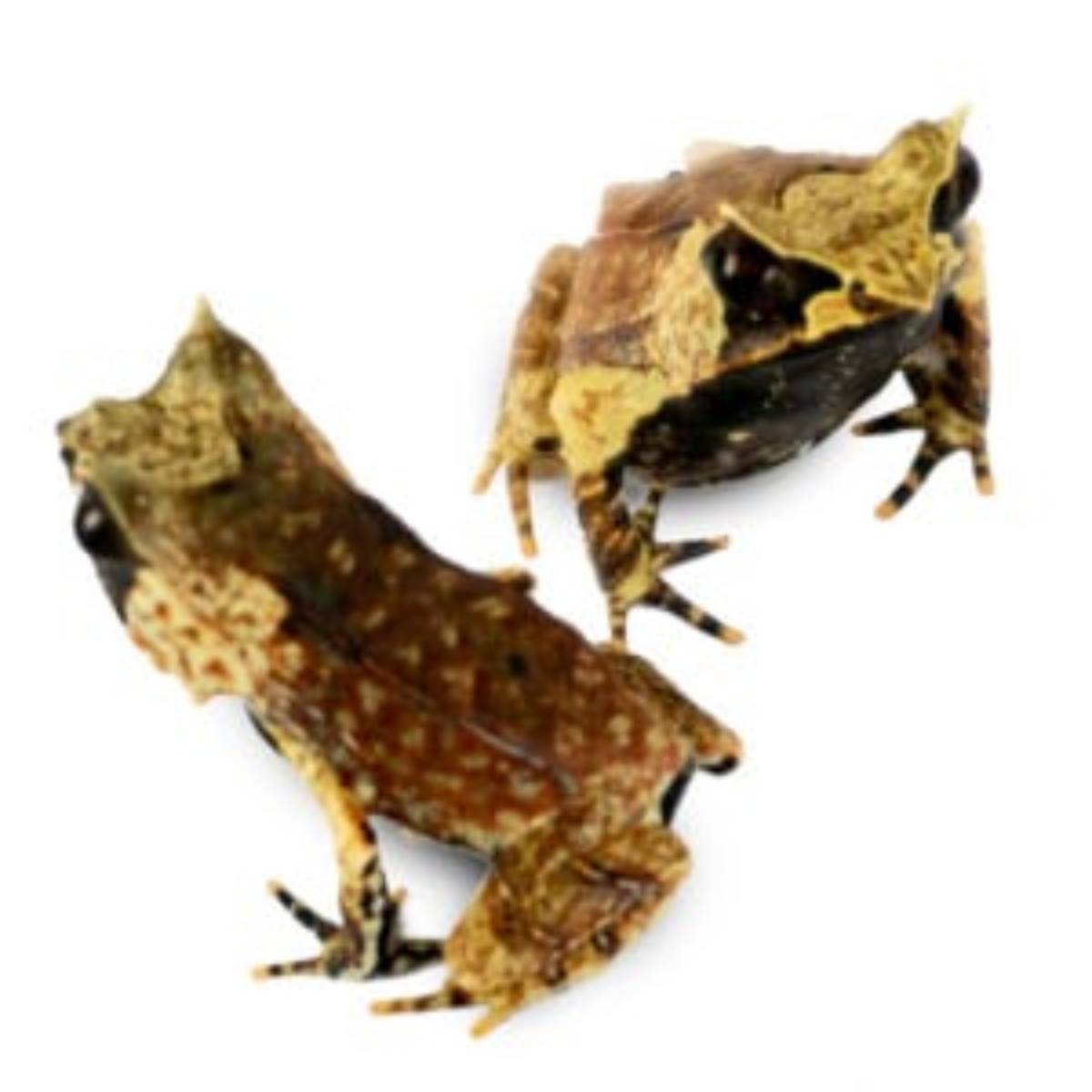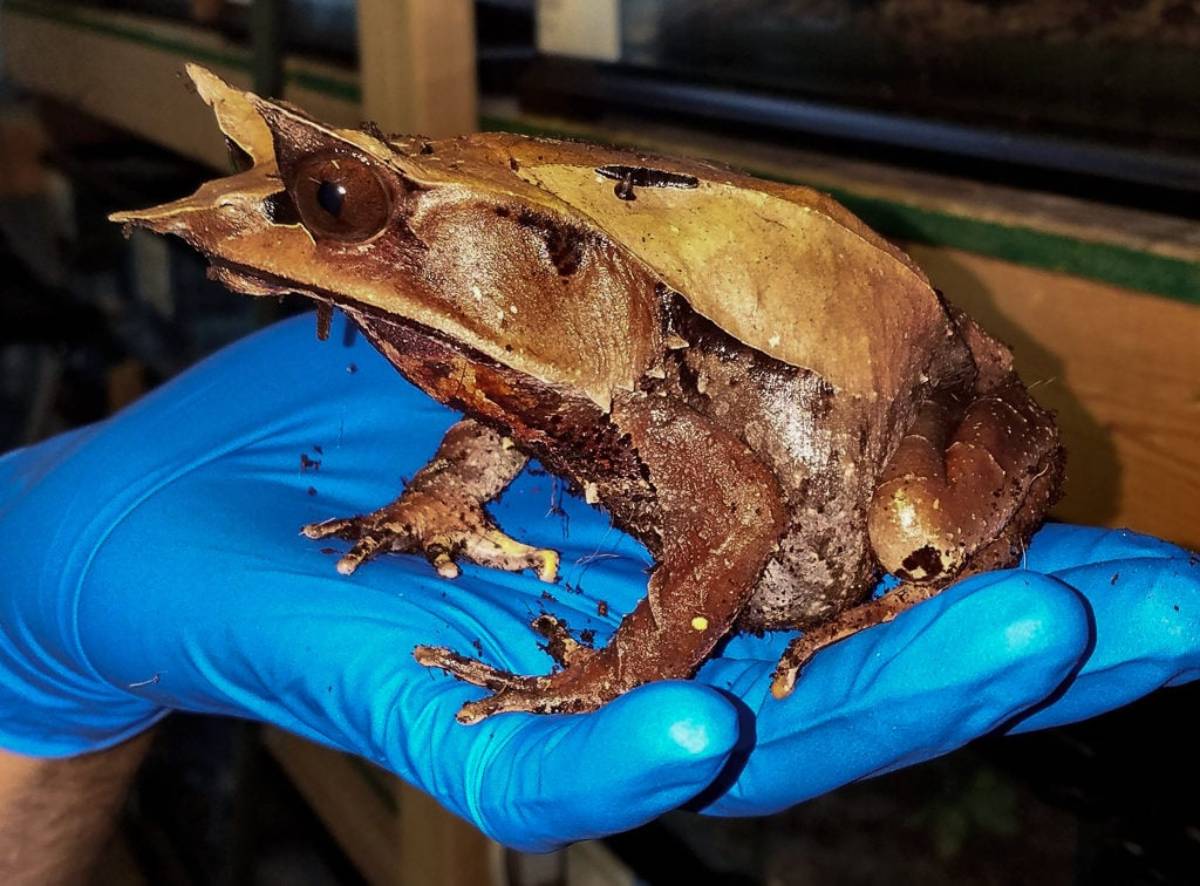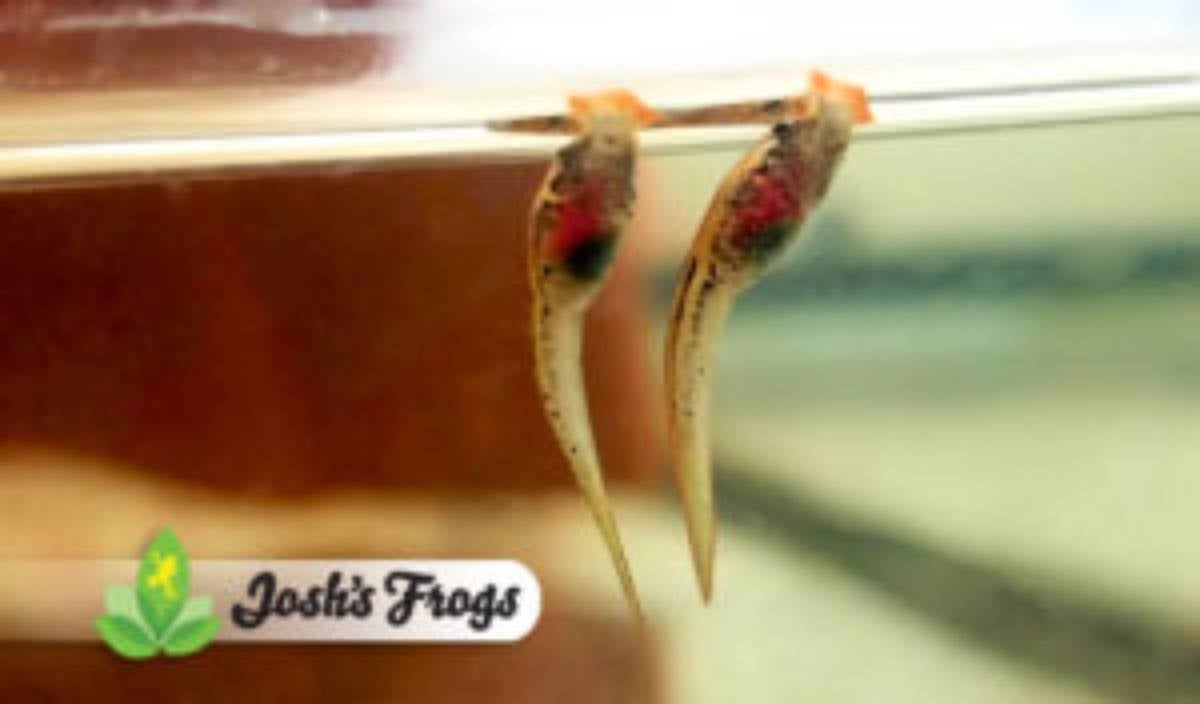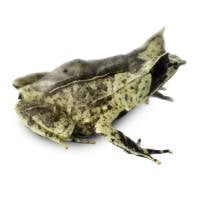Josh's Frogs
Malaysian Horned Frog Care

NAMING
Megophrys nasuta is commonly called the Malaysian Horned Frog in the hobby, although common names include Large horned frog, Bornean Horned Frog, and Horned Toad. These frogs are moderately easy to keep (as long as you can balance their ventilation and humidity needs), but can be very difficult to breed. Overall, these mostly brown to red frogs are relatively shy and have a loud, barking call. They have excellent camo, blending in well with the leaf litter of their native forest homes.HOUSING
Housing adult Horned frogs can be tricky as females can reach over 5” and need a lot of space to move around. A 40 breeder is adequate with larger being even better for a male/female pair. Make sure the tank is at least 16"" tall - any lower and your frogs will bump their ""horns"" on the top occasionally, resulting in a bald frog! Exo Terra's 36""x18""x18"" tank is a great size for a pair, and provides fantastic cross ventilation. Solomon Island Leaf Frog substrate is suitable for this species with a water feature being optional but definitely appreciated - make sure to at least provide a large water bowl for soaking. The frogs will trample any live plants that you provide for them, so plants that grow on the background or artificial plants would be the way to go. These frogs love large cork tubes or rounded flats. These frogs should be provided with a 5.0 or UVB100 bulb.HABITAT
Megophrys nasuta prefer to be kept in the low to mid 70s. Additional heating is not recommended, as these frogs do not like it warm. If you can't keep them below 76F or so, reconsider keeping this species. Malaysian Horned Frogs can handle a wide range of humidity levels but prefer to stay higher than many other frogs. Eighty percent or higher is not going to cause harm to this species, as long as there is adequate ventilation. Automatic misting, using a MistKing or Exo Terra Monsoon, is a great option if you're unable to mist your horned frogs at least 2 times a week. Wet, stagnant conditions for long periods of time will kill this species, but you cannot allow them to dry out. Make sure to keep track of temperature and humidity with a digital thermometer and hygrometer.SIZE
Adult Megophrys nasuta are some seriously big frogs, and there is a large size difference between males and females. An adult male may reach about 7.5cm / 3 inches SVL (snout to vent length). Females will be larger and bulkier than a male, and measure 13cm / 5.5 inches SVL. Juvenile Horned frogs will be about 1.5” long when they are sold at Josh’s Frogs. All reports state that this is a fairly quick growing species, and can reach maturation in 2 to 3 years.
LIFE SPAN
There is not any reliable data surrounding the average lifespan of Megophrys nasuta but like most other ground dwelling frogs they will most likely live for at least 5 years and probably longer with ideal care.FEEDING
Malaysian Horned Frogs are capable of eating crickets of varying sizes their whole lives. This can be supplemented with dubia roaches, Silkworms and Horn worms. At Josh’s Frogs, we feed our Horned Frogs primarily crickets and dubia roaches. Make sure any prey items are properly gutloaded with a quality insect food, and dusted with a vitamin/mineral supplement. These frogs are voracious eaters that grow quickly - providing a nutritious, complete diet is vital to their growth and development. These frogs also take to tong feeding really well. This is a great way to ensure your frogs are eating, while keeping loose insects out of the enclosure. Plus, it's fun!SEX
Sexing adult Megophrys nasuta is fairly straightforward once they’re older, but can be difficult on younger animals. Once the frogs are nearly mature they display obvious sexual differences. Females are about 60% larger than males, much more rotund, and have a larger head in relation to their body than the opposite sex. Males are smaller, more slender, and typically call when kept in a rain chamber set up. We do not expect captive bred Malaysian Leaf Frogs to be sexable when available at Josh's Frogs. Wild caught animals are nearly always male, as it's much easier to hunt noisy males down in the forest.Listen to a male call below:[video width="320" height="568" mp4="http://www.joshsfrogs.com/catalog/blog/wp-content/uploads/Malaysian-horned-frog-call-Edit.mp4"][/video]COLOR
Megophrys nasuta are light brown on their backs with some having black spike-like protrusions on their flanks. Their throats are brick red or dark orange with mottling of either black or cream. Think fall leaves, and you've got a great idea what colors these frogs display. They may initially look drab (standing out in the wild results in being eaten!), but a cryptic pattern and bits of red and orange really give these frogs a unique, subdued appearance. Except when calling, these frogs do a great job blending in with leaf litter. Set them up in a large enclosure with a lot of leaf litter and watch them disappear!SOCIALIZATION
As with most frogs, Megophrys nasuta will be mostly solitary but can be kept in small groups with little aggression being displayed outside of the breeding season. We've had good luck housing 1.1 pairs and 2.1 trios together. Watch your animals carefully - the larger females can quickly hog any food.BREEDING
Megophrys nasuta will breed year round in small streams but in captivity they can be persuaded to breed when set up in an enclosure that has a rain chamber. The rain intervals should be set with longer bouts occurring at night and small “showers” occurring during the day. We settled on 72""x18""x18"" tanks for breeding trios, which allows plenty of space for a large water feature. We settled on 72""x18""x18"" custom tanks to house 2.1 trios for breeding attempts.Amplexus will happen sporadically but may not always result in a breeding event. When a female lays eggs she will affix them to emergent structures or vegetation just below the water’s surface. The female lays the eggs (over 2400 in our first clutch) in a long, spread out clump. Initially, we failed to provide enough surface area for the female to deposit eggs on and she deposited eggs on top of eggs when the cork log was full. This resulted in most of the eggs becoming smothered by eggs laid on top of them, and a small hatch - only about 200 tadpoles.TADPOLE CARE
Development of the eggs can be visible to the naked eye within 24 hours of the eggs being laid but very quickly becomes impossible to notice. In fact, the eggs don't really appear to change much for the first 4-6 days. The eggs develop very slowly and tadpoles are free swimming for almost 2 weeks. After this it can take anywhere from 4-7 months for the tadpoles to fully develop into froglets. Tadpoles of this species have a unique mode of consumption. Their mouths are upturned and can only eat from the surface of the water, so only food that floats should be fed to them. At Josh's Frogs, we've had luck raising tadpoles primarily on our Tree Frog and Toad Tadpole Food. To prevent too much food from spoiling the water Corydaras Catfish can be introduced to eat any food that sinks to the bottom.


